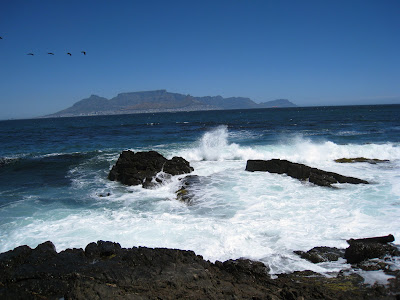Nelson Mandela is the person I most admire. For nearly 30 years, he lived by his principles, not giving into the White racist rulers of South Africa under Apartheid. He chose prison at the cost of a comfortable life as a lawyer. He had no family life and had little contact with the outside world for most of his confinement. Yet, when he finally gained freedom and was elected the President of South Africa in the early 1990s, he did not cling to power, choosing to retire after two terms, giving up the Presidency gracefully.
Robben Island has been a prison for more than a hundred years. Ordinary criminals as well as political prisoners were confined there. They had no access to visitors, newspapers, or radio. To keep them occupied, the prisoners were made to work in limestone quarries which in turned affected their lungs. They were not tortured (as political prisoners usually are) but their loneliness must have been unberable because Cape Town is only a few kilometers away and clearly visible from the island. But escape (by swimming) was not possible due to strong sea currents.
The entrance to the prison

The cell where Nelson Mandela slept. He did not have a bed; instead, prisoners were given a thick mat made of rough cotton fibre. The winters are bitterly cold. Because the cell is so small (less than 6' X 6'), Mr. Mandela would not have been able to stretch his legs when he slept. And this went on for 20 years!
Tours are conducted by former prisoners. I am with Wiseman N. Mdlalana, who was a prisoner on the island for 10 years. He now runs a wine business in Cape Town.
A limestone quarry where the prisoners were made to work.





No comments:
Post a Comment